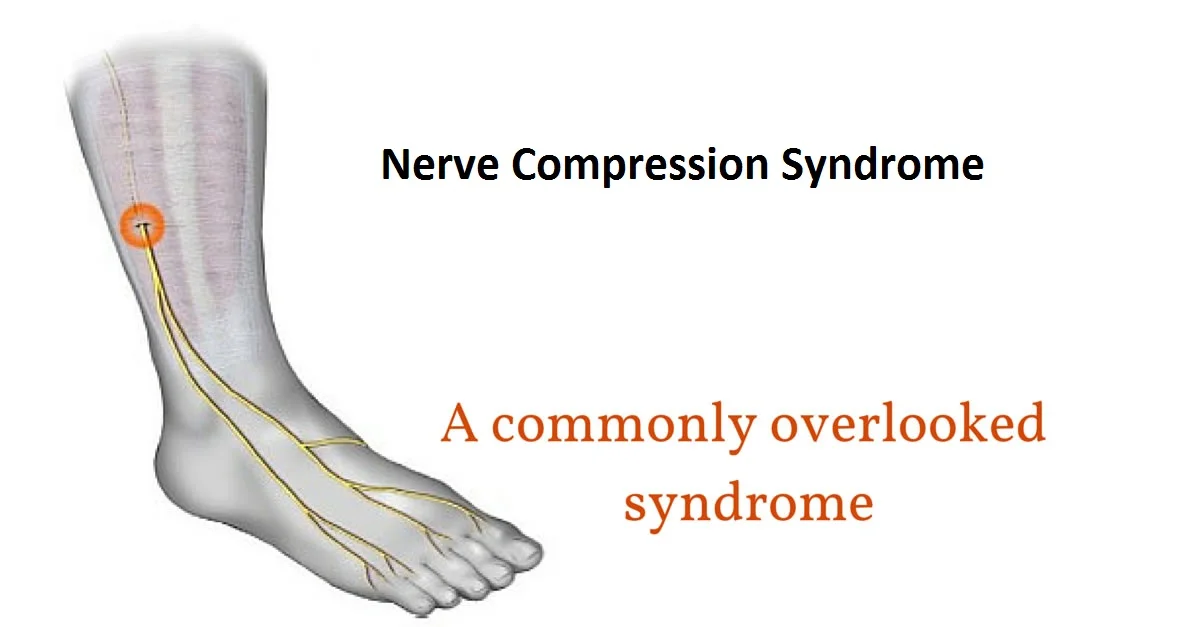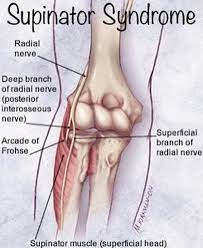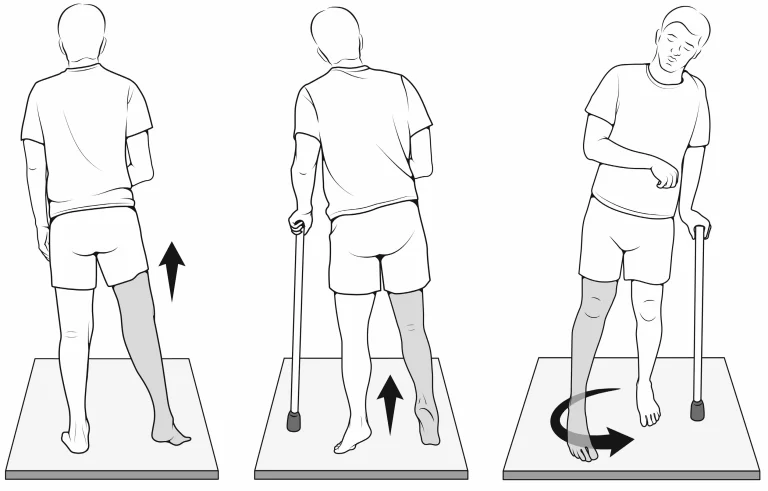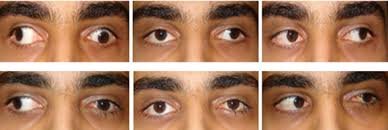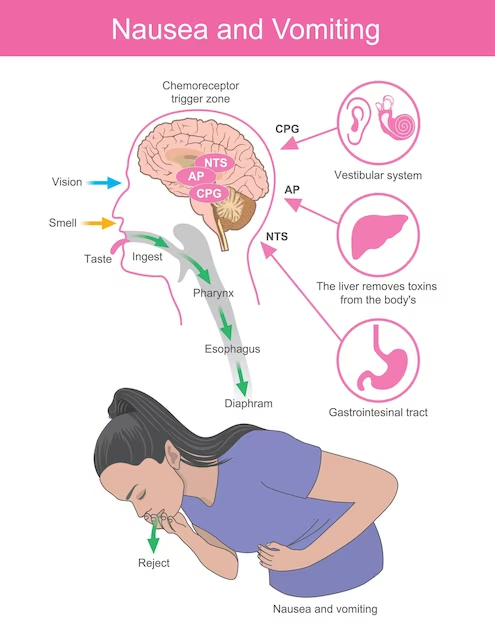Nerve Compression Syndrome
Nerve compression syndrome can outcome from pressure on a peripheral nerve. Carpal tunnel syndrome is the most usual type. Other types involve sciatica and ulnar nerve entrapment. Repetitive movements can conduct in a pinched nerve and neuropathy. You may have limb weakness, numbness, pain, and tingling. At-home treatments provide symptom relaxation.
Table of Contents
What is Nerve Compression Syndrome?
- A Nerve Compression Syndrome can occur when there is pressure on nerves in the peripheral nervous system. These nerves connect to areas of your body (such as your hands and feet) that are farther away from the central nervous system (such as your brain and spine).
- Nerve compression syndromes are a usual cause of nerve (neuropathic) pain in the limbs. They can conduct to a pinched nerve and neuropathy (nerve damage).
What are the types of Nerve Compression Syndrome?
- Nerve compression syndromes can affect various peripheral nerves in your upper or lower body.
Syndromes that affect your upper limbs involve:
- Carpal tunnel syndrome: Pressured median nerve in your wrist. Carpal tunnel syndrome is the most usual type of nerve compression syndrome. It happens when the median nerve is pressed at the wrist. The median nerve expands from the upper arm to the thumb. At the wrist, it passes through a structure known as the carpal tunnel. Excess pressure on the wrist may cause swelling, which can conduct to carpal tunnel syndrome.
- Pronator teres syndrome: Pressured median nerve in your elbow.
- Radial tunnel syndrome: Compress on the radial nerve in your elbow.
- Suprascapular nerve entrapment: Harm to the suprascapular nerve in your shoulder.
- Thoracic outlet syndrome: Pressured nerves in your lower neck and upper chest (thoracic outlet).
- Ulnar nerve entrapment: Pressured ulnar nerve in your elbow (cubital tunnel syndrome) or wrist (Guyon’s canal syndrome).
- Radial nerve compression syndrome: This syndrome harms the radial nerve, which enlarges the length of the arm. It can affect wrist, hand, and finger function.
Nerve compression syndromes that affect the lower limbs involve:
- Meralgia paresthetica: Compress on the lateral femoral cutaneous nerve in your thigh.
- Peroneal nerve compression: Compress the peroneal nerve in your lower leg.
- Pudendal nerve entrapment syndrome: Pressured pudendal nerve in your pelvic area.
- Sciatica: Harm to the sciatic nerve in your lower back, hips, butt, or leg.
- Tarsal tunnel syndrome: Harm to the tibial nerve in your heel or sole of your foot.
What causes Nerve Compression Syndrome?
- Nerve compression sometimes harms nerves that progress between little openings (known as tunnels or canals) in your joints. Tissue swelling or damage puts compression on the nerve, causing symptoms.
Possible causes of nerve compression syndromes involve:
- Accidents and trauma
- Ankle, knee, or wrist sprains
- Arthritis
- Broken bones and bone spurs
- Diabetes
- Dislocated joints, like a dislocated elbow or dislocated shoulder
- Herniated disk
- Hypothyroidism (underactive thyroid gland)
- Surgical complications
- Tumors or cysts.
Who is at risk for Nerve Compression Syndrome?
- Anyone can have nerve compression syndrome. Often, the weight from obesity or pregnancy squeezes the nerve. Casts, splints, and the utilization of crutches can also cause nerve problems.
- People who do certain jobs or activities that need repetitive joint movements also are more at risk.
This involves:
- Assembly line workers
- Baseball players
- Bicyclists
- Construction workers and carpenters
- Golfers
- Tennis players
- Typists
- Weightlifters.
What are the symptoms of Nerve Compression Syndrome?
- Symptoms of nerve compression syndromes look after to come on gradually. The symptoms may become and go and range from mild to severe. These symptoms may require worse when you do activities that pull or press on the nerve.
- Nerve compression syndromes cause a difference in symptoms depending on which nerve it harms. You may experience:
- Pain, numbness, or tingling in the part of compression (usually a joint like your wrist, elbow, or ankle).
- Inability to move a limb, lift your hand or foot, or grasp and hold onto items.
- Limb weakness that harms your ability to do daily tasks or makes you feel clumsy.
- Muscle loss in the affected part.
How is Nerve Compression Syndrome diagnosed?
- Your healthcare provider (doctor) will perform various tests during a physical exam to evaluate your symptoms. Your healthcare provider (doctor) may ask you to grasp onto items, pick up something or lift your foot or hand.
If an exam indicates a potential nerve problem, you may receive 1 or more of these diagnostic tests:
- Electromyography (EMG) and nerve conduction study to calculate the transmission of nerve signals to muscles.
- MRI, neuromuscular ultrasound, or X-rays to check for compressed nerves and see for problems like arthritis, ligament injuries, and fractures.
What are nonsurgical treatments for Nerve Compression Syndrome?
Certain nerve compression syndromes rise with nonsurgical treatments, such as:
- Nonsteroidal anti-inflammatory drugs (NSAIDs) or steroid injections for pain & inflammation.
- Physical & occupational therapy to improve strength and flexibility. You can learn the latest ways to move and perform tasks that won’t irritate the compressed nerve.
- Splints, braces, and orthotics to support the injured area.
Physiotherapy Treatment
- Postural and biomechanical rectifying is vital to addressing the underlying mechanisms that are causing neural irritation. The clinician should be aware of repetitive movement patterns which may be causing the nerve to massage or be compressed by surrounding tissues.
- A clinician may consider non-steroidal anti-inflammatory medicines, like ibuprofen aspirin, or naproxen, to help reduce swelling around the nerve. Although steroids, like cortisone, are very effective anti-inflammatory medicines, steroid injections are generally not used because there is a risk of damage to the nerve.
- Bracing or splinting can be considered to help encourage rest for the nerve. This is a good opportunity for an Occupational Therapy consult.
- You can consider nerve gliding exercises if the nerve is in the appropriate phase of healing. Nerve gliding exercises are not commonly motivated during the acute healing duration.
What are surgical treatments for Nerve Compression Syndrome?
If nonsurgical treatments do not provide adequate symptom relief, surgery can help. Turning on the origin of nerve compression, surgery can:
- Open up the nerve tunnel,
- Remove tumors or cysts,
- Repair, relocate, or transfer nerves.
How can I cure Nerve Compression Syndrome at home?
If you are at risk for nerve compression syndromes, these steps can help:
- Adjust your keyboard to assist your wrists to stay flat when you type.
- Do not rest your elbows on an office chair or a desk for an extended period.
- Stretch your limbs throughout the day.
- Take periodic breaks from typing.
- Utilize a wrist rest with your keyboard and mouse pad.
- Wear a brace or splint.
What are the complications of Nerve Compression Syndrome?
- Severe nerve compression that lasts more than 6 weeks can cause permanent muscle waste and nerve damage. You should see your healthcare provider (doctor) quickly about symptoms so you can begin the appropriate treatment.
What is the prognosis for people with Nerve Compression Syndrome?
- Many people require symptom relief through nonsurgical methods. When required, decompression surgery to take pressure off of the nerve sometimes helps. Physical and occupational therapy exercises can cure nerve problems from recurring.
When should I call my doctor?
You should talk to your healthcare provider (doctor) if you experience:
- Difficulties with daily tasks such as buttoning a shirt, typing or holding a pen,
- Joint pain,
- Limb numbness, tingling or weakness,
- Problems walking.
Summary
- Nerve compression syndrome is the outcome of nerve irritation or pressure. Carpal tunnel syndrome (CTS) in the wrist is the most regular type. Nerve compression syndromes can also harm your lower limbs.
- You should look to your healthcare provider if you experience unexplained limb numbness, pain, tingling, or weakness. Your Doctor may recommend surgery if medical treatments do not provide symptom relief or if you have a severely compressed nerve.
FAQs
The most sometimes recommended treatment for a compressed nerve is rest for the affected area. Your doctor will tell you to end any activities that cause or aggravate the compression. Depending on the position of the compressed nerve, you may require a splint, collar, or brace to immobilize the area.
Once treated, a pinched nerve will likely go away unless the same body tissues press against the harmed nerve again. Chronic compression may conduct in permanent nerve damage, so it is important to help take preventive measures when you can.
Nerve compression syndrome is sometimes caused by repetitive injuries. These injuries may happen in the workplace due to repeated movements related to your job duties. For example, repeated overextension of the wrist while typing on a keyboard, utilizing a mouse, or playing the piano can conduct to carpal tunnel syndrome.
Pain, numbness, or tingling in the part of compression (usually a joint like your wrist, elbow, or ankle).
Inability to move a limb, lift your hand or foot, and grasp or hold onto items.
Limb weakness that harms your ability to do daily tasks or makes you feel clumsy.
While some “pinched nerves” may resolve independently with a little TLC, certain nerve compression problems worsen over time. If you pass over your symptoms, you could wind up with permanent nerve damage, along with symptoms such as chronic referred pain, muscle weakness with mobility difficulties.
The conditions that may be causing nerve damage that can be identified by MRI involve spinal cord compression or fracture, arthritic changes, tumors pressing on a nerve, or herniated vertebral discs.
The answer is yes! By applying pressure to the pinched nerve, it can assist in the release of tension, decrease pain, and inflammation, and promote circulation. It will also assist relax you, your muscles, & the affected area as well.

